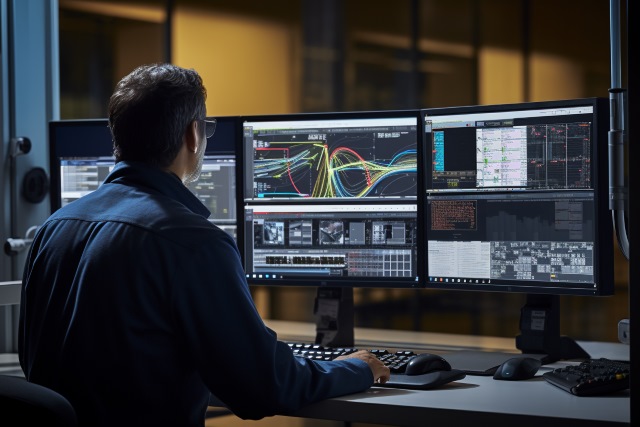Building owners and managers need to constantly optimize operations, reduce costs, and provide more attractive, productive spaces for tenants to stay profitable. Supervisory control systems can help building owners and managers keep up with demands and remain competitive. It gives managers unprecedented visibility and control over building operations, allowing them to create efficient and comfortable spaces.
What is supervisory control?
Supervisory control refers to computer systems that remotely monitor and control facility processes. It enables operators to oversee operations and make adjustments from a central control room or remote location.
These computer systems collect data from sensors, controllers, and equipment across a facility. A user interface presents the data to give real-time visibility into operations. Operators can then send commands to local controllers to modify process conditions.
How does it work?
A supervisory control system uses a relatively simple process. Sensors throughout the facility send data to programmable logic controllers (PLCs) over a network. The PLCs process this information and send it to a user interface that organizes it into dashboards, trends, alarms, and reports.
Users can view this visualization to monitor operations and see if any parameters are out of specification. They can also send new setpoints to the PLCs that control the process equipment accordingly if needed.
What is an example of it?
Building management systems (BMS) are one example of supervisory control. They use sensors to provide data on temperature, occupancy, power consumption, and other parameters to the on-site controllers. They can monitor energy use, adjust schedules, identify issues, and optimize the system remotely using web-based BMS software.
Different solutions and software
Supervisory control solutions and software include a wide variety of different tools. It can include solutions for individual systems such as ProptechOS partners ClimaCheck for heat pumps, air conditioning, and cooling compressors or eSys for energy management. But it also has more comprehensive solutions such as BMS.
Data acquisition
One key aspect of supervisory control is data acquisition, which refers to collecting data from industrial processes through instruments like sensors and meters. The supervisory control system can convert the analog signals of sensors to digital data.
How is supervisory control implemented?
Implementing supervisory control starts with defining project goals, followed by an audit of assets. A system architecture is designed around communication protocols, controllers, data needs, and network topology. Components are installed, integrated, and tested. Before going live, conduct validation testing.
What difference does it make in commercial real estate?
In commercial real estate, supervisory control can enhance a building in a few key ways, including:
- Energy efficiency: Constant monitoring and real-time control can drive insights to improve real estate energy efficiency.
- Remote operations: Remote monitoring and control enable dispersed teams to monitor and operate a facility.
- Real-time visibility: With energy use, occupancy, and equipment status sensors, supervisory control systems provide facility managers with real-time data visibility.
- Space utilization: Granular zone control enables maximum space utilization and flexibility.
How do supervisory control systems integrate with Proptech?
IoT sensors connected to building systems feed data to cloud-based Proptech apps. These provide remote monitoring, control, and performance analytics. ProptechOS can integrate lighting, HVAC, security, lease management, and more. You can try ProptechOS for free to see how integrating your Proptech solutions can benefit your commercial real estate portfolio.

Dr. Erik Wallin
Chief Ecosystem Officer, and founder of ProptechOS and RealEstateCore is recognized as a leader in Building Operating Systems (BOS) and making the buildings of the world smarter. He holds an MSc and a Ph.D. in Media and Computer Science from KTH Royal Institute of Technology.
Read his full bio and information here.

